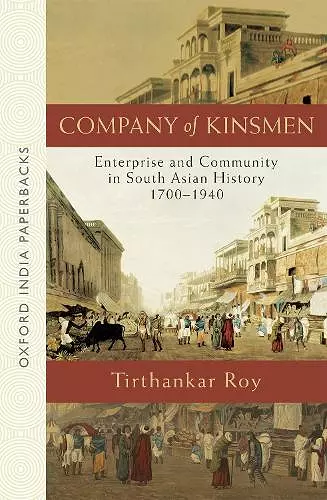Company of Kinsmen
Enterprise and Community in South Asian History 1700-1940
Format:Paperback
Publisher:Oxford University Press
Published:12th Apr '18
Currently unavailable, and unfortunately no date known when it will be back

This book chronicles how the concept of organizing people to serve economic ends emerged in early modern and colonial India. It examines rules of cooperation, why people decided to join forces, how disputes were settled, and how cooperative communities became increasingly unstable in more modern times. It focuses on five dimensions: actor, agent, time, purpose, and region. The leading actors are peasants, labourers, artisans, merchants/bankers, and the states. The rules of cooperation that formed inside communities of merchants and others were respected by the states. However, these rules would eventually become unstable due to the integration of India within a global-industrial economy and the introduction of a new rule of law in the old guise of 'custom'. As a result, the endogamous guild, a kind of collective that used marriage rules to secure cooperative ties, became weaker, to be supplanted by other forms of organization. Collectives controlled property, managed resources, supplied training, and conducted negotiations. The regional angle is important because regions differed on the composition of enterprise, and globalization and colonialism unfolded unevenly across space. The book presents an economic history of institutional change in South Asia.
This book, by a leading economic historian of South Asia, addresses a long-standing problem .. that of the dependent or independent role of social organization in the working of an economy .. [and] advances our understanding of an important economic region in both the past and the present. Sumit Guha (Journal of Interdisciplinary History)
The book makes an invaluable contribution to Indian economic history, business history, and global history more generally. It is a welcome addition for scholars working in these fields. Latika Chaudhary (Journal of Economic History)
'[A] real tour de force .. a creditable attempt to present a connected and conceptualized narrative of the great transition in the Indian economy from the eighteenth to the twentieth century.' Claude Markovits (Economic History Review)
ISBN: 9780199486809
Dimensions: 216mm x 143mm x 17mm
Weight: 248g
268 pages
2nd Revised edition